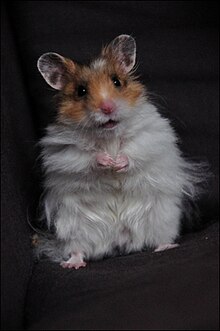Syrian Hamster Characteristics
Syrian hamsters, also known as golden hamsters, are among the most popular pets globally, beloved for their cute appearance and tame nature. These small creatures can become not only fantastic companions but also fascinating subjects to learn about. Understanding Syrian hamster characteristics is essential for any prospective owner, ensuring that health and happiness are prioritized for these adorable rodents.
Physical Characteristics of Syrian Hamsters
Syrian hamsters are known for their distinct physical traits that endear them to pet enthusiasts. They usually measure around 5 to 7 inches long and have a stocky build covered with a soft, dense coat. The coat comes in various colors, with gold and cream being the most prevalent. In addition, their large, round eyes are incredibly charming and can exhibit a variety of colors, including dark brown and black.

Size and Weight Considerations
Understanding the size and weight of Syrian hamsters is crucial for caretakers. On average, adult hamsters can weigh between 5 to 7 ounces. The weight can vary based on diet and genetics. It’s essential to monitor their weight regularly, as obesity is a common health issue among pet hamsters. Keeping an eye on the hamster’s activity levels and providing a balanced diet will encourage a healthy weight.
Coat Variations and Care
The coat of a Syrian hamster can come in several variations, including long-haired and short-haired types. Long-haired hamsters have a luxurious fur coat, but they require more grooming compared to their short-haired counterparts. Regular brushing helps prevent matting and keeps their coats clean and free of debris. Hamster owners should employ a gentle approach during grooming to ensure the hamster’s comfort.
Behavioral Characteristics
Despite being small, Syrian hamsters possess a captivating and diverse range of behavior traits that can be both entertaining and endearing. Syrian hamsters are primarily nocturnal, meaning they are most active during the night. Owners often notice their hamsters running energetically on their wheels or exploring their cages when it’s dark, adding a lively element to their pet ownership experience.
Social Interactions and Tameness
Known for their solitary nature, Syrian hamsters are generally best kept alone to prevent territorial disputes. Over time, they become accustomed to human interaction and can form strong bonds with their owners. Regular handling will help them become tame and trustful. When starting, it’s advisable to approach the hamster slowly, allowing it to acclimate to your presence before beginning to handle it more regularly.
Playful Nature and Enrichment
One of the captivating characteristics of Syrian hamsters is their playful essence. They enjoy activities that stimulate their minds and bodies, so providing various enrichment options is vital. Items such as tunnels, climbing structures, chew toys, and even sand baths replicate their natural instincts and offer invaluable exercise and mental stimulation. Regular interaction, such as allowing them to explore a safe, enclosed area, enhances their daily lives significantly.
Health Characteristics and Considerations
Like any pet, understanding the health characteristics of Syrian hamsters is critical. They may be prone to specific health problems, including wet tail (an intestinal infection), dental issues, and obesity. Regular veterinary check-ups ensure early detection and treatment of any potential health concerns. A balanced diet rich in grains, vegetables, and occasional fruits is also fundamental in supporting their overall health.
Signs of a Healthy Hamster
An owner should monitor several signs that indicate a healthy Syrian hamster. They should have bright, clear eyes and a clean coat with no bald patches. Active play, normal eating habits, and a regular drinking schedule are all good signs. If your hamster becomes lethargic, exhibits abnormal behavior, or refuses to eat, it’s essential to seek veterinary care promptly to address any underlying health issues.
Common Health Issues in Syrian Hamsters
Understanding common health issues in Syrian hamsters can aid owners in preventative care. Conditions such as tumors, respiratory infections, and nutritional deficiencies may occur, especially in older hamsters. Providing a clean habitat, nutritious food, and regular veterinary care can prevent many of these issues. It’s also essential to observe any behavior changes, as they could signal health problems requiring immediate attention.
Conclusion
Syrian hamsters are captivating creatures that bring joy to many households. Understanding their physical traits, behavioral quirks, and health needs is imperative for anyone looking to welcome one into their family. With the right care and attention, syrian hamsters will thrive and become cherished companions.
FAQ
1. How long do Syrian hamsters live?
Syrian hamsters have an average lifespan of 2 to 3 years, though some may live longer with adequate care. Keeping their living environment clean, providing a balanced diet, and ensuring regular vet visits contribute significantly to their longevity.
2. Can Syrian hamsters be housed together?
Error occurs if two Syrian hamsters are housed together, as they are solitary creatures and may fight. It’s best to keep them in separate cages to avoid territorial disputes and stress.
3. What are the best types of bedding for Syrian hamsters?
Safe bedding options include paper-based bedding or aspen shavings. Avoid cedar and pine shavings, as they can cause respiratory issues and are not safe for hamsters. Regularly cleaning and replacing bedding also promotes a healthy environment.
4. How often should I handle my Syrian hamster?
Initially, it is advisable to handle your Syrian hamster daily to build trust. Each session should be short and gentle, gradually increasing the time as the hamster becomes more comfortable with interaction.
5. What dietary components should I include in a Syrian hamster’s diet?
A balanced diet for a Syrian hamster should consist of high-quality hamster pellets, fresh vegetables, and occasional fruits. It’s crucial to monitor their food intake to prevent obesity while ensuring they have constant access to fresh water.
